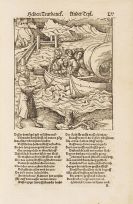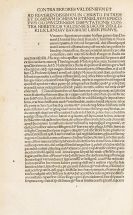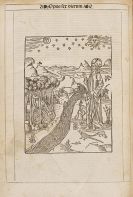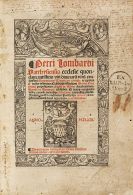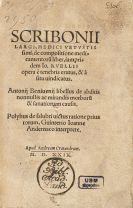
Sebastian Münster
Ingelheim
1489 -
Basel
1552
The theologist and cosmographer Sebastian Münster was born as the son of a farmer and hospital master in Ingelheim in 1489. In 1505 Münster became a Franciscan monk and studied philosophy and theology at the university of the order in Heidelberg. In 1507 he continued his education in Löwen, where he studied mathematics, geography and astronomy.
After a transfer to Freiburg, he also began to study Hebrew, which he continued after entering the St. Katharina monastery in Rouffach/Alsace in 1509. In 1512 Sebastian Münster was ordained as a priest in Pforzheim. From 1514 to 1518 he taught as a lecturer of philosophy and theology at the university of his order in Tübingen and conducted astronomical-mathematical and geographical studies.
His most important teacher was Johannes Stöffler (1452-1531). After Münster moved to Basel in 1518, he published his first text, a survey of Hebrew grammar "Epitome Hebraicae Grammaticae", which was one of the first ever language books on Hebrew published in Germany.
From 1521 to 1529 Münster worked and taught in Heidelberg, published numerous Hebrew texts and wrote the first books written in Aramaic ever to be published in Germany. In 1529 Sebastian Münster converted to reformation and took over the chair of Hebrew at the university of Basel, where reformation had just been established.
A little later he married the widow of a book printer; Münster's stepson Heinrich Petri from then on published most of his books. In 1534-35 Sebastian Münster finally published his main work in Hebrew, which met with international acclaim: a two-volume edition of the Old Testament "Biblia Hebraica" with a Latin translation and annotations.
Münster died in Basel in 1552. Münster's most important work was "Cosmographia" (Basel, 1544), a geographical and historical description of the world with special attention to Germany, which initially included 471 woodcuts and 26 maps in 6 volumes. This work was based on the work of more than two decades and several research trips.
"Cosmographia" was translated into various languages, reprinted almost 50 times and extended by more than 900 woodcuts. By 1628, 21 editions had been published in Germany alone. The work is regarded as one of the most important books of the 16th century and is almost the only reason for Münster's lasting fame.
Would you like to sell a work by Sebastian Münster?
Infos for seller
